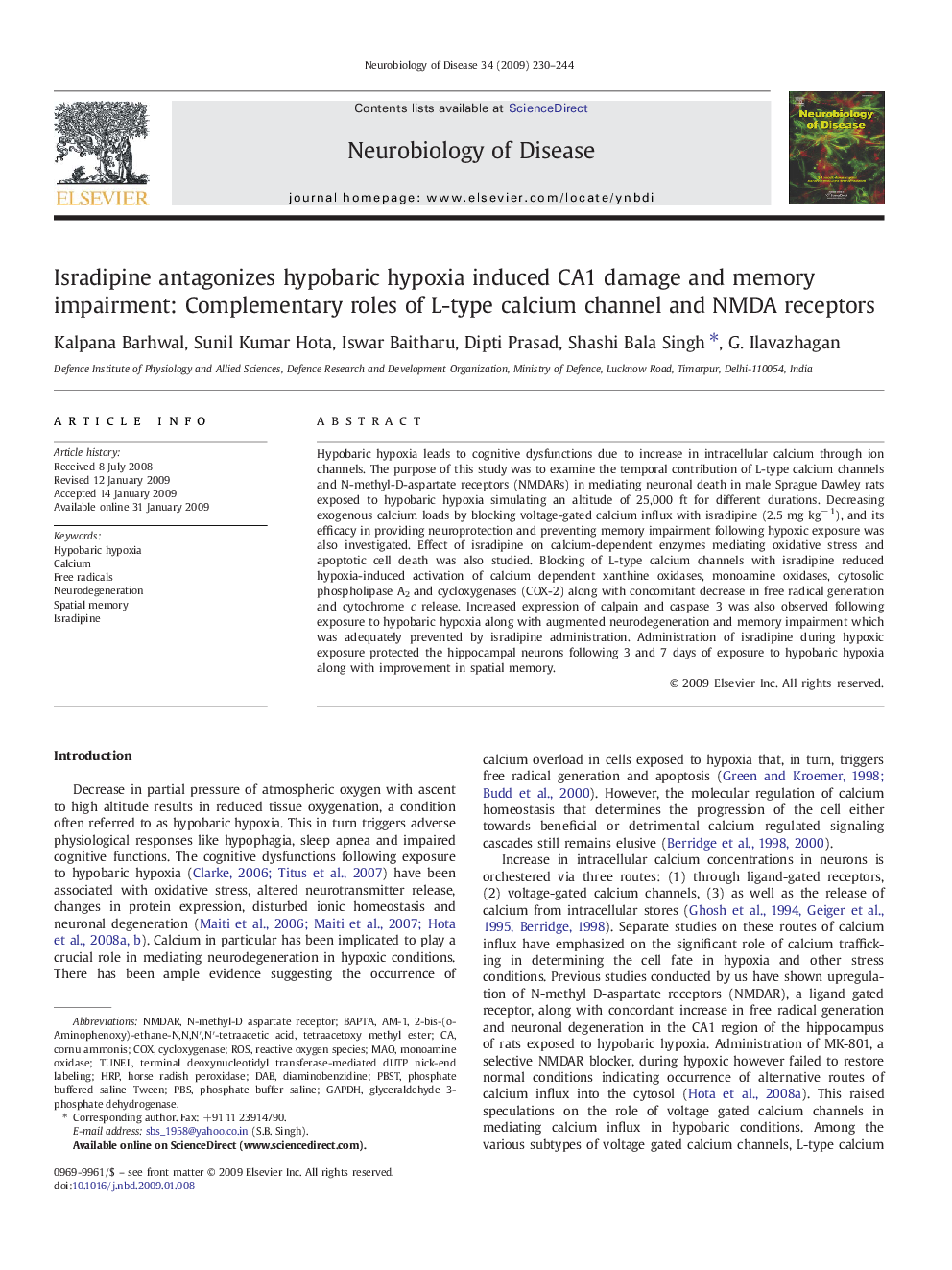| کد مقاله | کد نشریه | سال انتشار | مقاله انگلیسی | نسخه تمام متن |
|---|---|---|---|---|
| 3070083 | 1580719 | 2009 | 15 صفحه PDF | دانلود رایگان |

Hypobaric hypoxia leads to cognitive dysfunctions due to increase in intracellular calcium through ion channels. The purpose of this study was to examine the temporal contribution of L-type calcium channels and N-methyl-D-aspartate receptors (NMDARs) in mediating neuronal death in male Sprague Dawley rats exposed to hypobaric hypoxia simulating an altitude of 25,000 ft for different durations. Decreasing exogenous calcium loads by blocking voltage-gated calcium influx with isradipine (2.5 mg kg− 1), and its efficacy in providing neuroprotection and preventing memory impairment following hypoxic exposure was also investigated. Effect of isradipine on calcium-dependent enzymes mediating oxidative stress and apoptotic cell death was also studied. Blocking of L-type calcium channels with isradipine reduced hypoxia-induced activation of calcium dependent xanthine oxidases, monoamine oxidases, cytosolic phospholipase A2 and cycloxygenases (COX-2) along with concomitant decrease in free radical generation and cytochrome c release. Increased expression of calpain and caspase 3 was also observed following exposure to hypobaric hypoxia along with augmented neurodegeneration and memory impairment which was adequately prevented by isradipine administration. Administration of isradipine during hypoxic exposure protected the hippocampal neurons following 3 and 7 days of exposure to hypobaric hypoxia along with improvement in spatial memory.
Journal: Neurobiology of Disease - Volume 34, Issue 2, May 2009, Pages 230–244